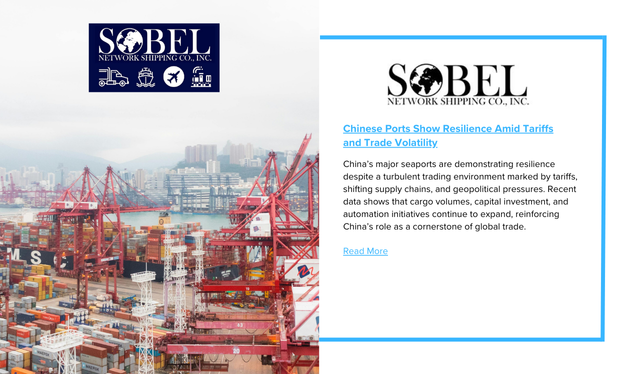China’s major seaports are demonstrating resilience despite a turbulent trading environment marked by tariffs, shifting supply chains, and geopolitical pressures. Recent data shows that cargo volumes, capital investment, and automation initiatives continue to expand, reinforcing China’s role as a cornerstone of global trade.
Trade Performance
According to official customs data, the value of China’s foreign trade in the first half of 2025 rose 2.9% year-over-year to about US$3.04 trillion. Exports climbed 7.2% to US$1.81 trillion, while imports dipped 2.7% to US$1.23 trillion. Although growth rates were slower compared with the past two decades, the figures exceeded expectations given ongoing tariff disputes and supply chain disruptions.
Temporary trade suspensions earlier in the year caused by retaliatory tariffs created volatility, but agreements to defer additional levies allowed shippers to front-load cargo. At the same time, exporters diversified into ASEAN, European, Latin American, and African markets, helping offset reduced flows to the United States.
Port Throughput
China’s ports handled almost 173 million TEUs in the first six months of 2025, up 6.9% from the same period a year earlier. June was especially strong, with a record 6.7 million TEUs processed in a single week.
Shanghai’s Yangshan port reported 14.2 million TEUs in H1, up 7.3% year-over-year, putting it on track to surpass 2024’s record of 26 million TEUs. Other ports, including Ningbo-Zhoushan, Qingdao, Tianjin, Guangzhou (Nansha), and Shenzhen (Yantian), are simultaneously expanding capacity, signaling long-term confidence in trade growth.
Investment and Automation
Despite tariff pressures, capital expansion projects remain on schedule. Authorities and operators are pushing ahead with large-scale infrastructure upgrades, underscoring expectations of continued demand.
-
Yangshan (Shanghai): Construction is underway on a second, fully automated terminal with capacity of 11.6 million TEUs, due by 2030. New cranes are being added to boost density and accelerate vessel turnaround times.
-
Ningbo-Zhoushan: A US$1 billion terminal project will add a quay for ultra-large vessels, with completion expected by 2028.
-
Shandong Port Group (Qingdao and others): Coordinated investments will lift capacity to 40 million TEUs annually, with Dongjiakou and Qianwan among the key development sites.
-
Tianjin: A US$2.7 billion program is underway to expand annual throughput by over 50% to 35 million TEUs, supported by new channels for mega-vessels.
-
Guangzhou (Nansha): Phase V development and related projects will push handling capacity beyond 31 million TEUs by 2032.
-
Shenzhen (Yantian): An eastern extension of YICT, capable of handling 3 million TEUs annually, is scheduled to open in 2026 with next-generation automated cranes.
Global Significance
China now leads the world in automated port development, with more than 50 fully automated terminals already in operation. By maintaining investment momentum during periods of uncertainty, the country is positioning itself to manage larger ships, faster turnaround, and smarter port operations that integrate AI and sustainability.
The ongoing buildout underscores a broader strategy: insulating Chinese trade flows from geopolitical volatility by strengthening domestic infrastructure and diversifying export markets.


